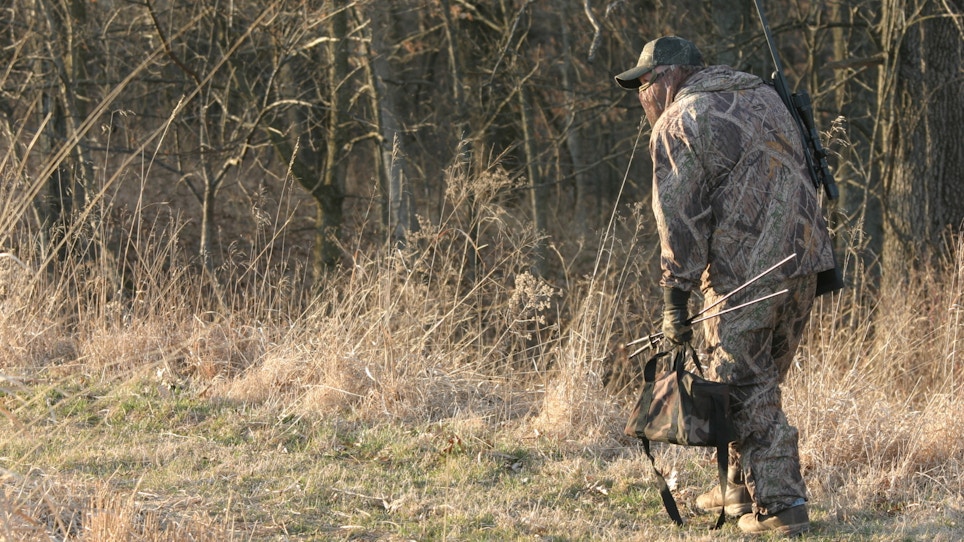There are few hard and fast rules regarding all coyote behavior. Coyotes surprise me on nearly every outing. Nevertheless, coyotes do have a tendency to roll up in a fur ball and take an obligatory midday siesta like your own canine friend. They may partake of the ritual on cold days to soak up sunshine, hot days to enjoy shade or in hunter-heavy areas to escape to solitude. Like whitetail hunters, some callers shut down over the midday window. Is that always a good idea?
If you do decide to disrupt a coyote’s afternoon snooze you may want to consider a wake-up call that doesn’t necessarily alarm a coyote, but rather entice it to show itself for a red-tipped ending.
For midday setups you simply need to do some map and math work. First, look for the best hunting areas in the region where you suspect coyotes may be nabbing the most calories. Once you find that ideal rodent-infested field then look in the nearby vicinity for secluded bedding cover. The two may be one in the same, but in some regions the two have distinct differences. Refuge will also likely be far and removed from residences, roads and other hustle, and bustle distractions. Now zero in on thick cover, deep ravines, sunny, yet secluded hillsides and anywhere a coyote could curl up in comfort with the “do not disturb” sign hung.
Use terrain to cover your approach and find ample downwind elevation to watch your shooting zone. In some Eastern settings you’ll have to trade elevation for edges.
What call you employ can vary, but generally less is best. Out West I routinely use a lone howl near these rugged locations to spark a coyote into a groggy investigation. Using a caller with remote, like the Grim Speaker 2, gives you opportunity to distance yourself from the sound for even more concealment. In more easterly GPS waypoints a howl may be too bold, but rodent squeaks, hog squeals and bird squawks can all make a coyote rise from a slumber and sneak in to investigate. In most situations a tease works well to start a setup and if nothing appears after 15 minutes you can slowly ramp up the message. Raise the volume and excitement level of the sound as time passes.
One of my favorite midday coyote hunting memories started on a high plateau overlooking a jigsaw of eroded features below. A coyote could hold up in any number of locations in the maze. I crawled out on a ledge overlooking a large chunk of the nasty real estate and let loose a lone howl in a not too obnoxious manner. I gripped my Bergara rifle and began scanning far and wide for a coyote trotting to the call.
What a surprise when I looked less than 100 yards away and a pointy-nosed coyote was staring right back at me. Apparently I had set up just above the bedroom and the coyote didn’t appreciate any other pajama-donning visitors. I ended the blank stare with a Hornady smackdown.






